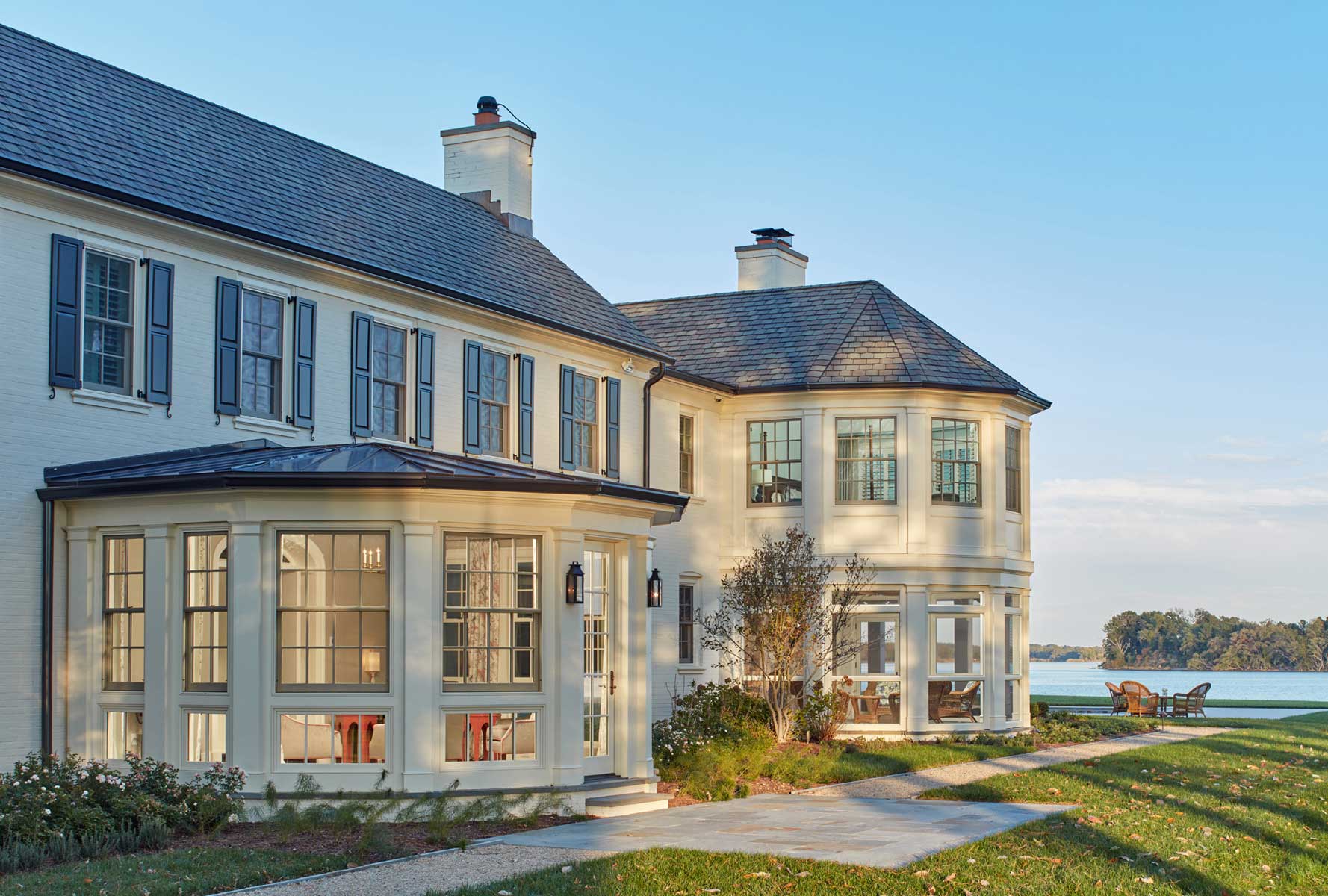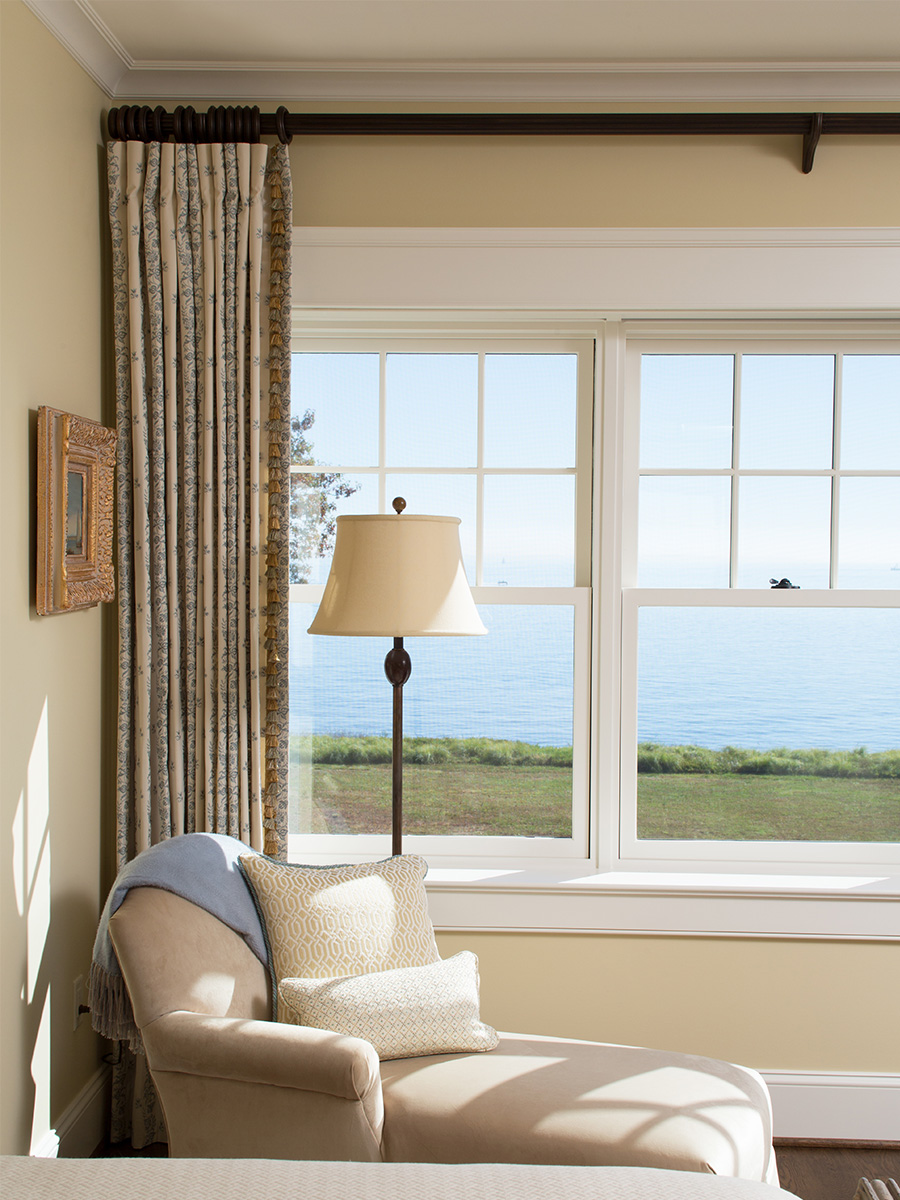Designing for the View
Is there anything better than a house with a beautiful water view? Whether it be waterfront on the shores of the Chesapeake Bay or sitting on a sheltered creek, a home site with a view of water gives homeowners opportunities for unparalleled beauty. While a spectacular water view is one of the most important factors in design, other site characteristics should always be considered. Observe how the sun moves across the sky throughout the day. Morning light streaming into an east-facing bedroom might be just the thing for an early riser, while an owner who likes to sleep late might prefer a dark, secluded bedroom on the west side and a light-filled kitchen on the east. Owners inspired by the gorgeous pinks and oranges of sunset views will appreciate outdoor living spaces such as decks or porches facing west. If those amenity spaces can have both water and sunset views, so much the better!
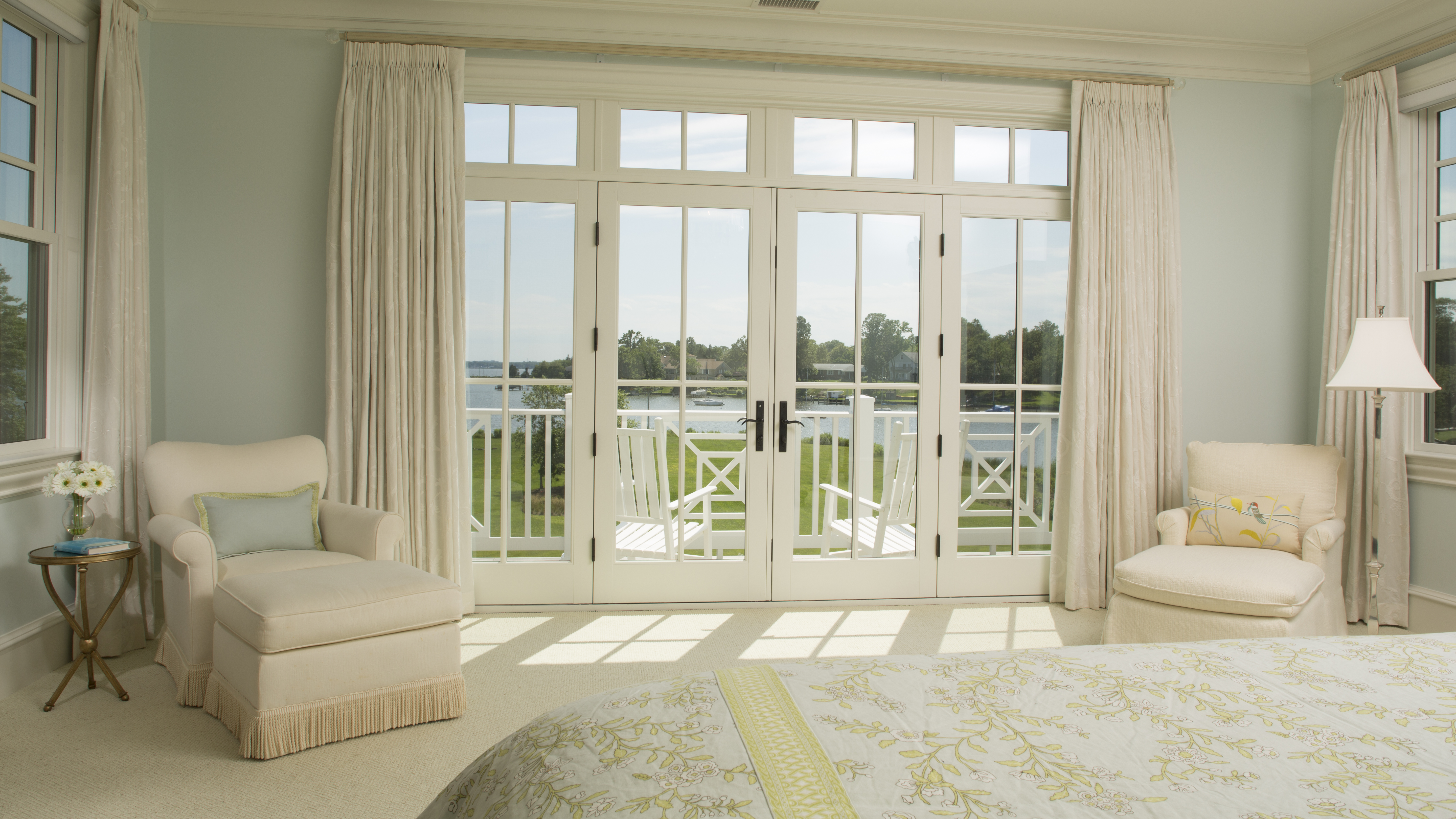
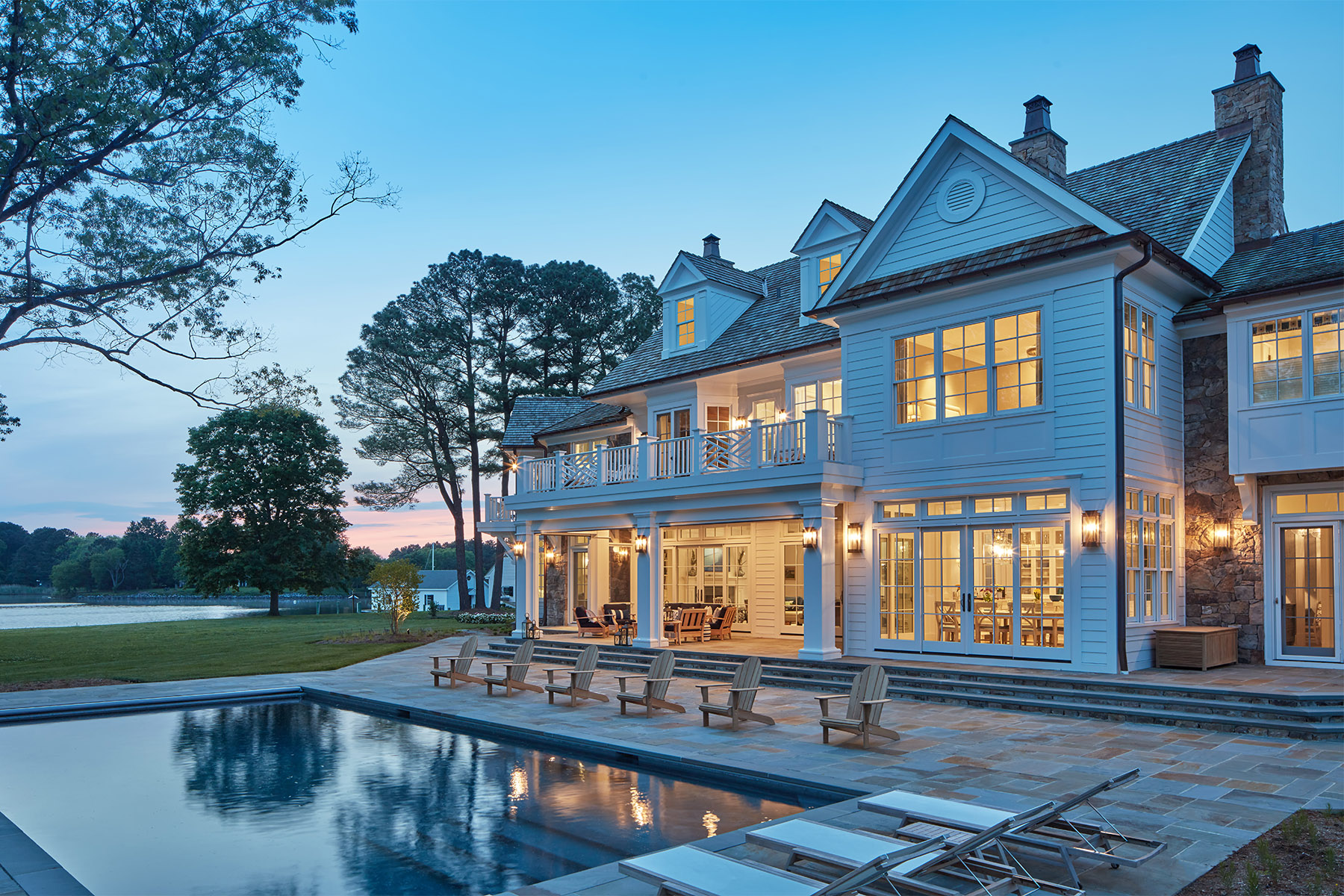
The most fortunate waterfront sites have beautiful views all around, but many properties have much more scenic vistas in one direction. When one direction is clearly the most attractive, you must consider the relative priority of the spaces to determine which space gets the best view. Often the main living space containing the living room, dining room, and kitchen is given pride of place, since these spaces form the core of the house where residents spend most of their time. Within that space, consider the owners’ preferences- to some, looking from the kitchen through a beautifully furnished, seldom-used formal dining room to the shoreline beyond is a fantastic way to draw the beauty of nature into the house. Others, maybe those raising small children, or those who like to casually entertain with everyone gathered around the kitchen island on barstools, want the kitchen windows looking straight out at the water.
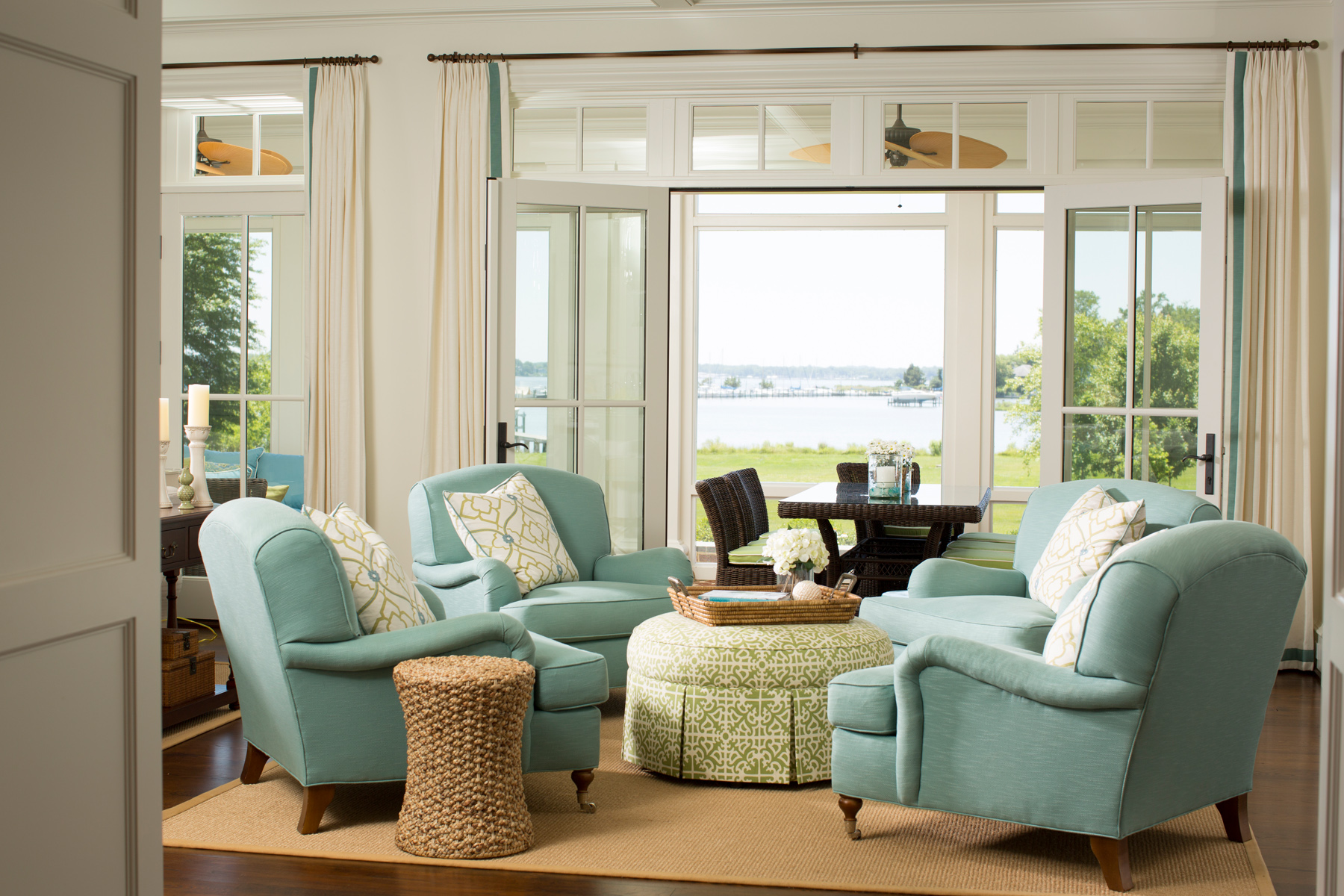
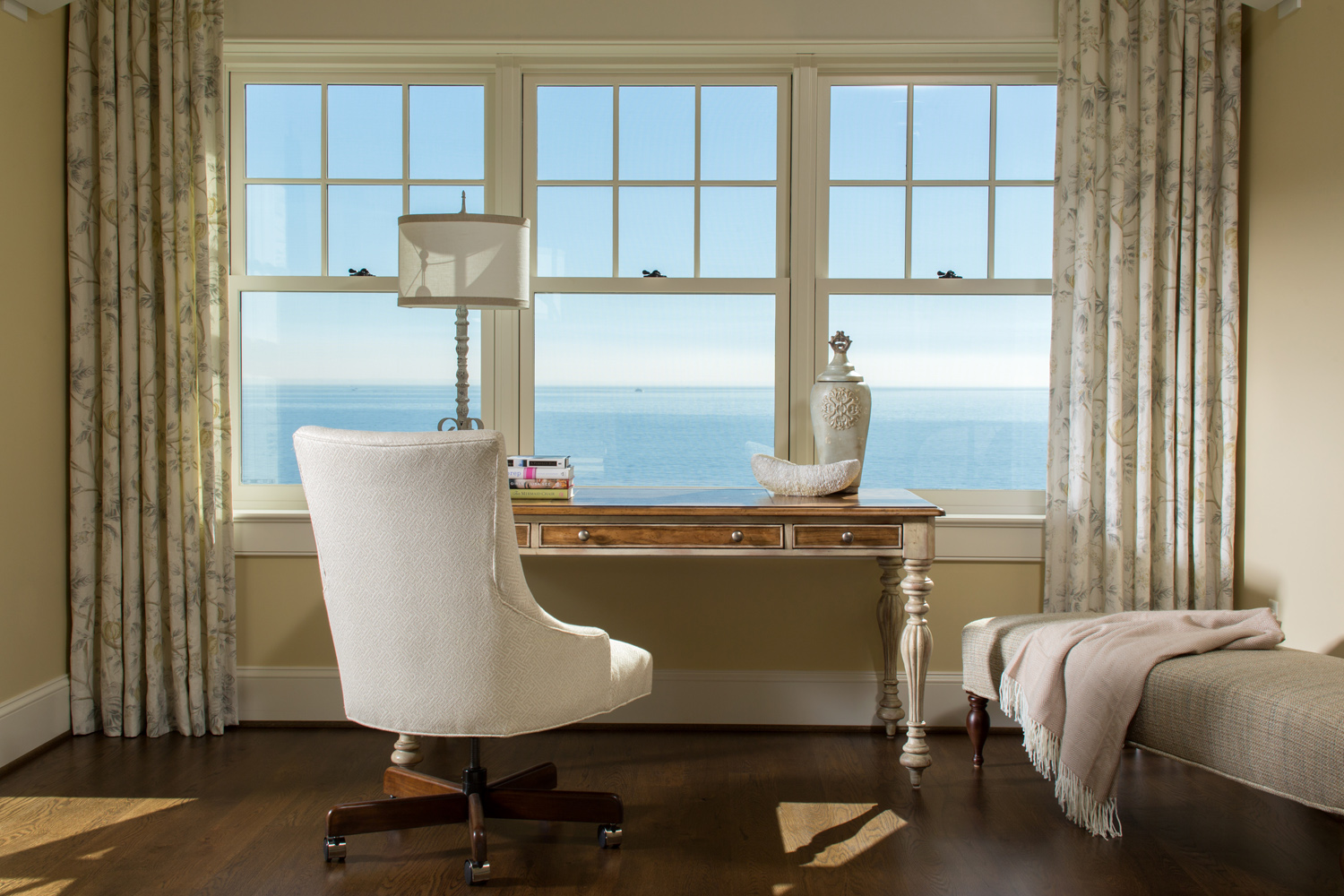
Less important spaces where residents don’t congregate, like closets, pantries, or mudrooms, can be placed in areas with no view of the water, or even be used to screen undesirable elements such as nearby neighbors.
If the house is high on a hill, the best view will be below you when you’re inside. Window sills must be placed low to avoid blocking views. Window heads must be placed to maximize views, and when windows are divided, such as when double-hung units are used, special attention must be given to the height of horizontal divisions. Nothing is worse than a badly-placed sash or mullion at eye level. Many window manufacturers now make wood windows with narrow, modern profiles that maximize the glazed opening, such as the Weathershield Contemporary Collection. And although they tend to be expensive, all-metal windows offer the narrowest profiles available and expansive glass area, such as Arcadia Custom luxury windows.
Porches, terraces, and other outdoor spaces associated with the house also must be considered in planning for views. While they benefit from water views themselves, they also affect views from adjacent spaces. Different clients have varying tolerances for viewing through screens, or even past columns supporting porch roofs. High-visibility screens are available from window manufacturers, and can be installed in porches as well, to significantly improve the ability to see through to the landscape beyond. If the site is wide enough, outdoor spaces can be placed alongside the house rather than between the house and the water, allowing unobstructed water views from the interior. However, an outdoor space that allows a room to be opened up and expand toward the water provides great flexibility for entertaining and an unmatched sense of extending the living space into the exterior.
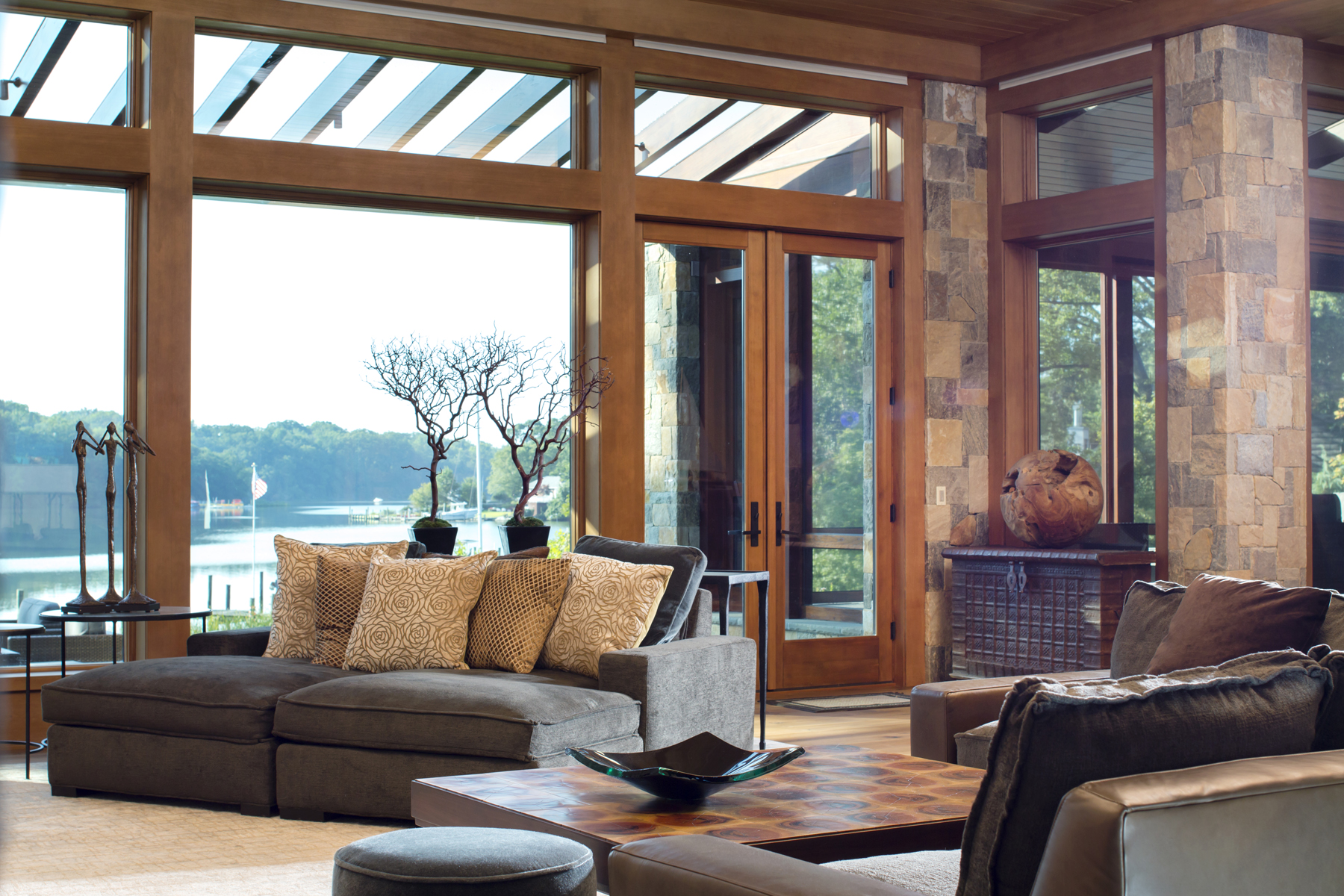

If a swimming pool is desired, its placement also affects the view to the water. A pool sitting between the house and shoreline becomes a primary visual element. In the summer, the sparkling water accents the landscape design and entices people to come outside and lounge poolside. This suits those who want to see the pool from the interior when entertaining or to monitor the activity in the pool. In the winter, however, a covered pool lacks that charm, so some clients prefer to locate the pool in a less prominent location and give the area in the foreground of the view to beautiful gardens or terraces.
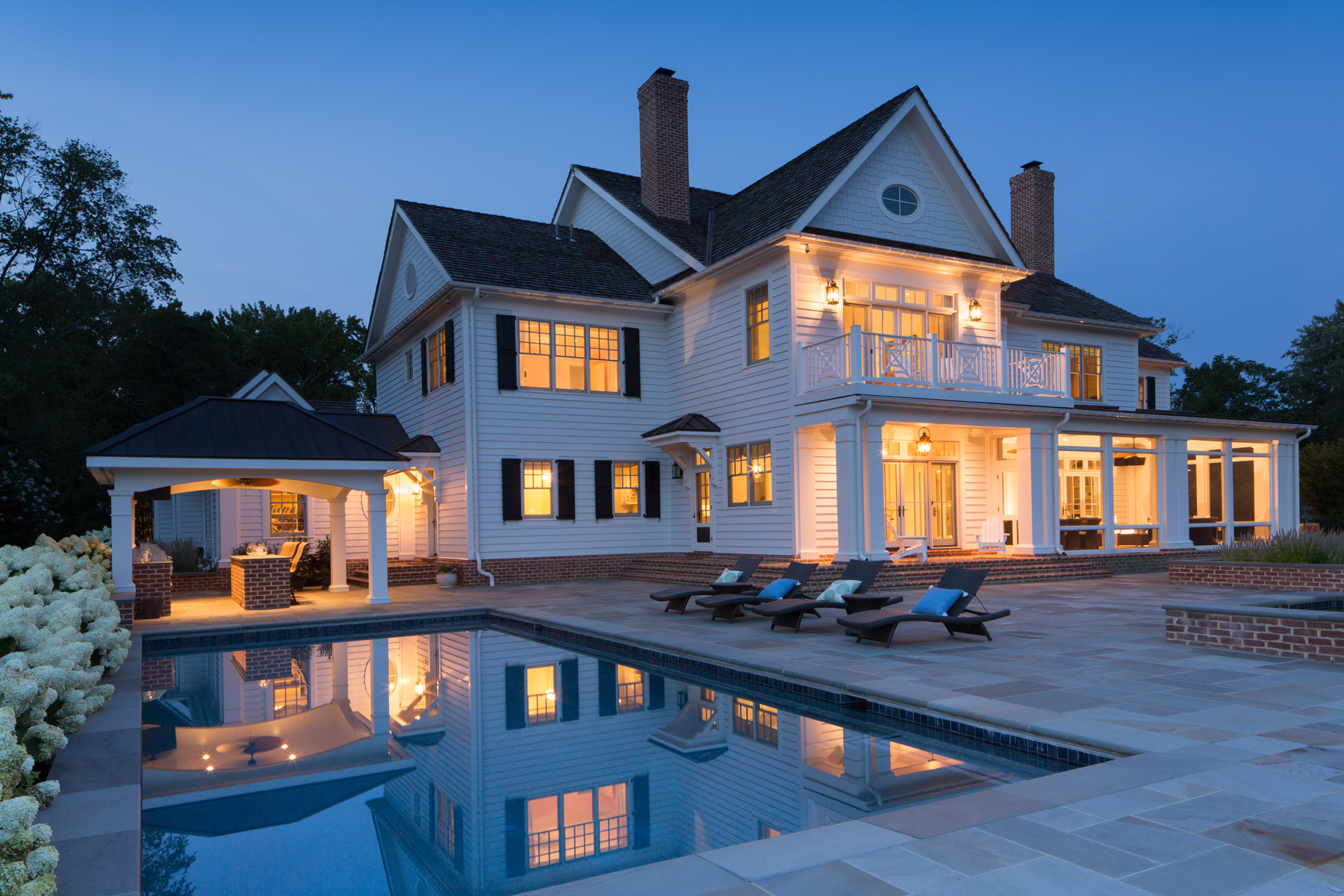
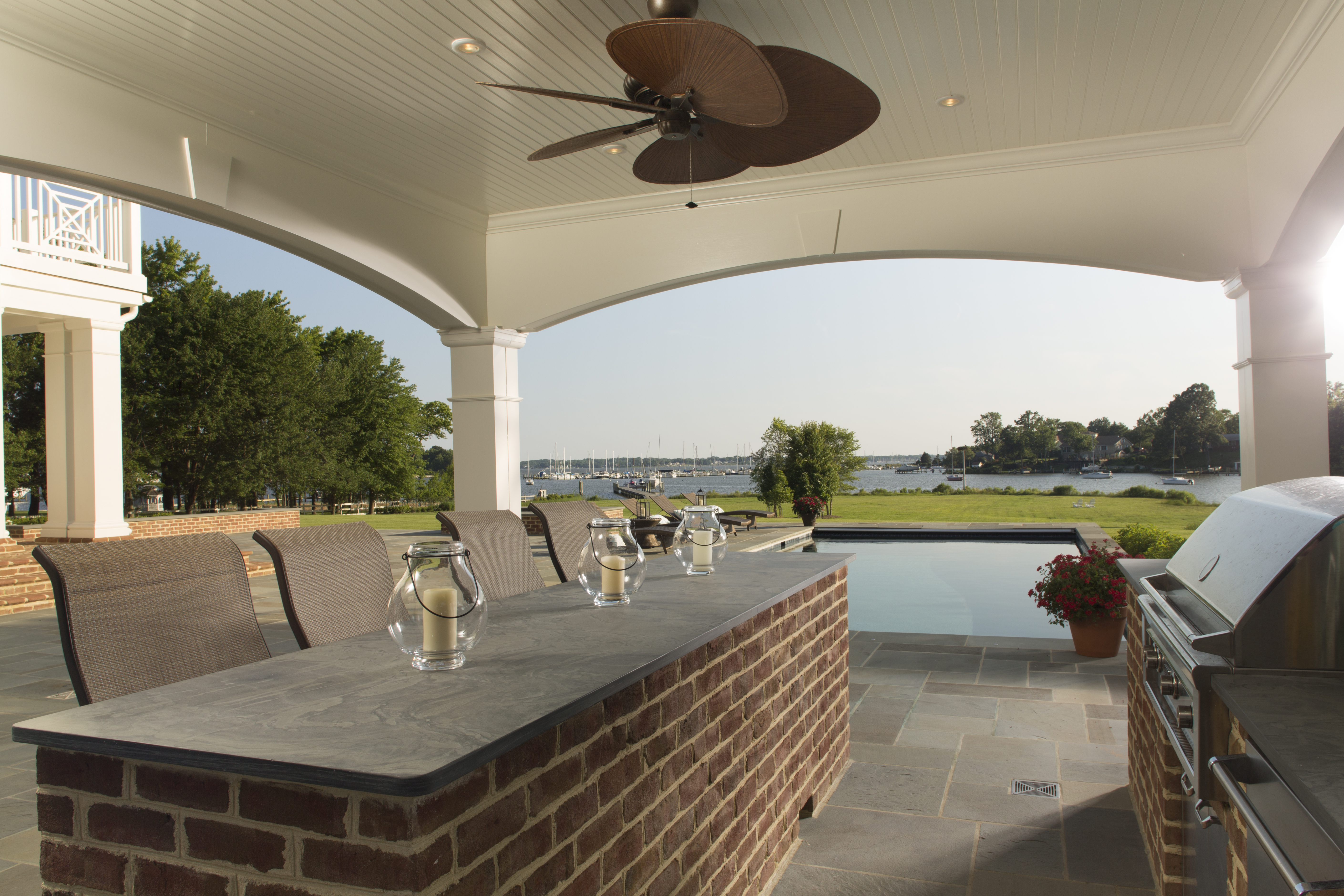
Divisions, or muntins, in windows are a matter of personal taste, with passionate advocates on both sides. Some owners want nothing to come between them and the view, and prefer narrow frame profiles and unbroken expanses of glass. While this tends to create a more contemporary appearance, it is suitable for a variety of architectural styles. On the other side, there are clients who appreciate the classic detail and sense of scale that divided lights provide, and feel that the divisions don’t create a bothersome obstruction. One current trend is painting window sashes and divisions a dark color, which gives a cool, modern vibe to the interior. Neither conclusion is wrong, but understanding which camp the owners fall into is important.
You may want to view straight through the house from the front door, seeing the water beyond and creating a dramatic “wow” moment as soon as you arrive. Fully glazed doors with wide sidelights or adjacent windows provide this sense of drama and maximize the openness and connection between the entrance and the living space. However, there are reasons to go in a different direction. Some clients want more privacy than a transparent entrance provides and don’t feel comfortable with large glazed doors. In that case, the revelation of the water view only after being invited into the house itself can provide its own sense of excitement and create a progression from the exterior world into the private realm.
A waterfront site has so many wonderful benefits, paying attention to the wide variety of details that come into play during design can help ensure that no opportunity is missed.
